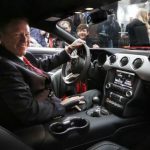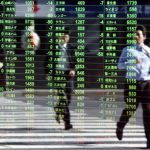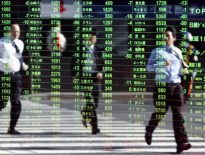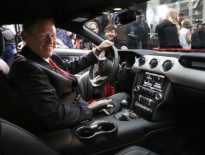BRUSSELS (AP) — Two weeks ago, the European Union’s foreign policy chief was at a summit in Lithuania, wooing Ukraine’s president with offers of preferential dealings with the world’s largest trade bloc. This week, she stood in Kiev’s Independence Square with protesters bent on ousting the same man.
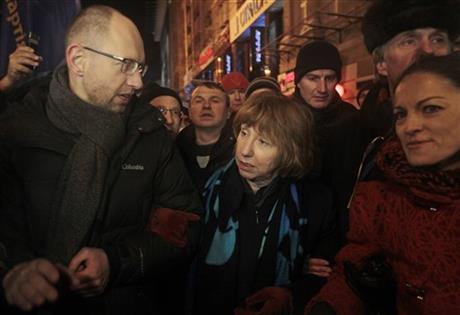
The EU is seeking to bounce back after Ukraine rejected a deal with Europe in favor of a rival alliance with Russia. What had been a policy of courting President Viktor Yanukovych has become a more nuanced campaign to work both sides of the escalating dispute.
The images of Catherine Ashton clinging to the arm of Ukrainian opposition leader Arseniy Yatsenyuk were a stark illustration of how the EU sees a fresh opportunity in the demonstrations that have divided the former Soviet republic.
The people of this great country deserve better, Ashton said Wednesday in Kiev.
But Ashton’s gesture also belied the fact that in the geopolitical battle over the direction of Ukraine, the 28-nation EU has so far been outhustled, and outmuscled, by Moscow.
For years, the EU failed to meet the enormous expectations Ukraine vested in it, and Yanukovych made the bloc pay for that when he rejected the EU trade and political cooperation deal he had promised to sign.
At a reception at the summit in Vilnius, German Chancellor Angela Merkel, wine glass in hand, chided Yanukovych, saying: “We expected more.”
Yanukovych could have said the same, noted Michael Emerson of the Centre for European Policy Studies.
“He could have replied, and said, ‘Me, too.’ He could have sent the ball right back,” said Emerson, a Ukraine expert at the Brussels-based think tank.
Moscow and Brussels have both had designs on Ukraine since the Soviet Union collapsed in 1991.
The Western Europeans had their best opening following Ukraine’s 2004 “Orange Revolution,” when popular protests swept away the results of a fraud-tainted election and brought in a new government which sent all eyes looking westward toward the EU.
But instead of seizing the opportunity and reaching out in a grand gesture offering the hope of membership, the EU urged caution and a step-by-step bureaucratic approach, frustrating the Ukrainians.
Ukraine pleaded for membership by 2015, but European Commission President Jose Manuel Barroso responded that “in the European Union, the member states are not ready to assume new membership obligations.”
Ukrainian politics soon sunk back into internecine power struggles, and the hopes of EU ascension were dashed.
While the EU sent lower-level officials to push for an “Eastern partnership” with former Soviet republics, Russia’s campaign for Ukraine was waged by President Vladimir Putin himself, and Moscow indicated it was ready to play hardball.
For one, it was offering big money. At the same time, the Kremlin used bullying tactics such as “disruptions to trade, cancellation of contracts, illegal use of food safety measures and other means,” according to the EU’s ambassador to Ukraine, Jan Tombinski.
The EU’s response was tepid in comparison.
But it has found new hope in the protests that broke out among pro-European Ukrainians in the wake of Yanukovych’s about-face.
Now, even as it endorses change for Ukraine, it is also welcoming the deputy prime minister, Serhiy Arbuzov, for talks in Brussels on Thursday.
It remains unclear how much the EU, which has said it will not join a bidding war for Ukraine, is willing to offer. Ukrainian Prime Minister Mykola Azarov estimates the country would need 160 billion euros ($220 billion) to adapt to the free-trade zone proposed by the European Union.
But the door is clearly back open, and EU officials are holding out hope that their annual summit with Ukraine, expected in the first months of 2014, could provide a breakthrough — and maybe even a signature on the deal that was rejected two weeks ago.
___
Associated Press writer Maria Danilova in Kiev contributed to this story.
___
Follow Raf Casert on Twitter at http://www.twitter.com/rcasert


